The "Session-Like" Creative Process of
DEVOA's Daisuke Nishida & THE VIRIDI-ANNE's Tomoaki Okaniwa
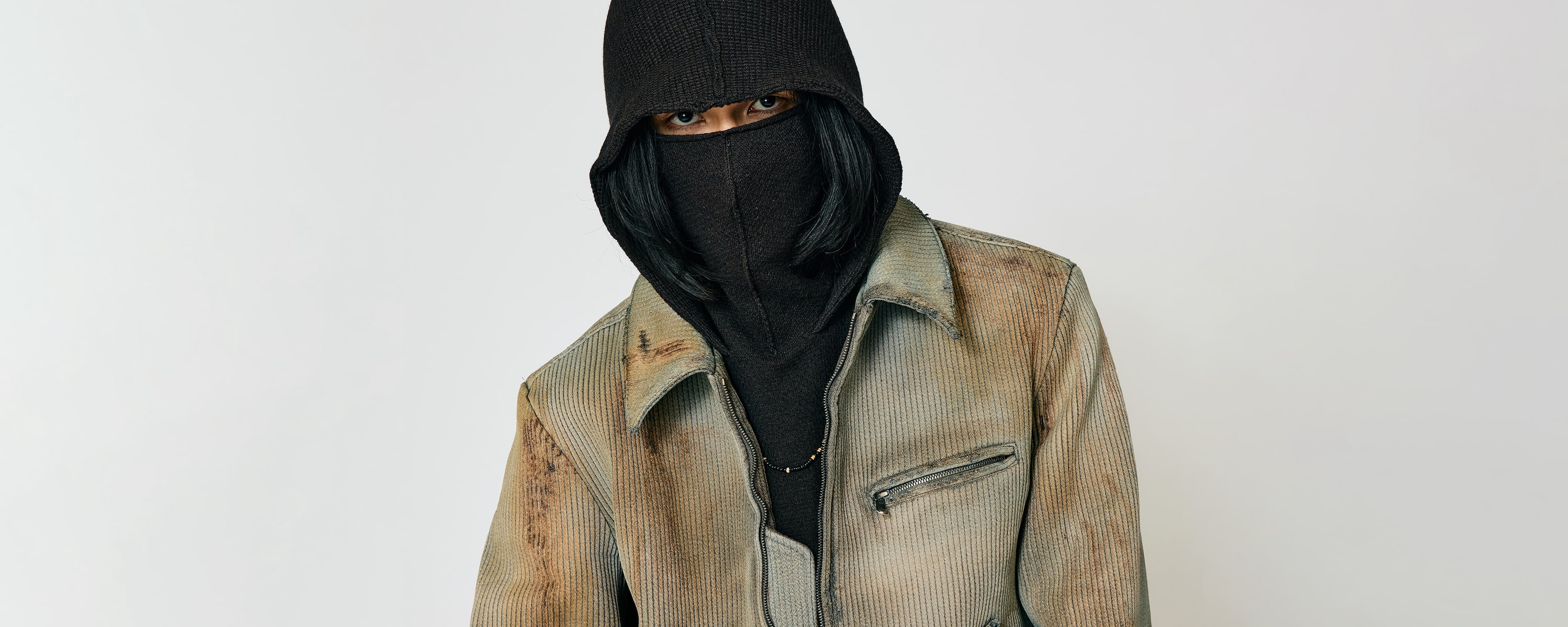
We had the opportunity to interview Daisuke Nishida, designer of DEVOA, and Tomoaki Okaniwa, designer of THE VIRIDI-ANNE.
The two, along with sales director Koyama, have launched a project called "ISŌ: Phase," where their three talents intertwine in a "session-like" creative process.
We spoke in detail about their process and mindset, which are completely different from their personal brands, as well as the behind-the-scenes stories of their amazing 25FW collection items that will make you say, "Wow."
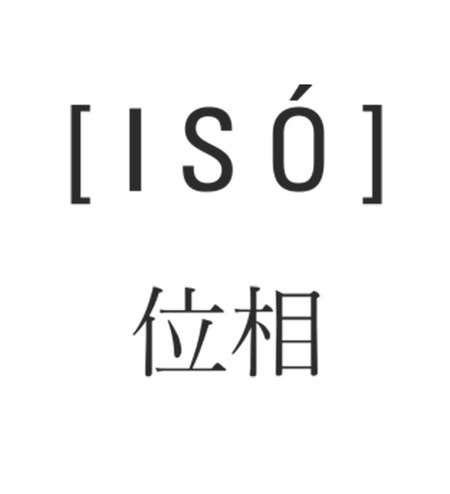
A collaboration project by Daisuke Nishida of DEVOA and Tomoaki Okaniwa of THE VIRIDI-ANNE. With a three-person team including sales director Mr. Koyama, they develop free-form creations that transcend the boundaries of their individual brands. Like a "band session," they pursue a pure and unpredictable form of craftsmanship born from the intersection of their respective talents and ideas.
The Project's Beginning and a Unique Creative Style
An Spontaneous Project Born from 18 Years of Trust
Thank you for your time today. First, could you tell us what led to the start of "ISŌ: Phase" and how you two met and decided to work together?
Nishida: Well, before I met Okaniwa-san, I had a long-standing connection with Koyama-kun (our current sales director). He introduced me to Okaniwa-san 18 years ago when I came to Tokyo for a DEVOA exhibition.
Okaniwa: Yes, that was our first meeting. From there, we also did joint exhibitions in Paris, but even though we've known each other for a long time, we never specifically talked about doing something together. We maintained a comfortable distance, respecting each other as independent designers and just chatting whenever we met.
Nishida: Our relationship changed when I approached him and asked, "Would you be interested in doing a collaboration project?"
Okaniwa: Honestly, when I first heard it, I thought, "Why me?" But as he explained it, it sounded really interesting. However, it didn't start right away; for about a year, we just had casual, aimless chats without any concrete goals.
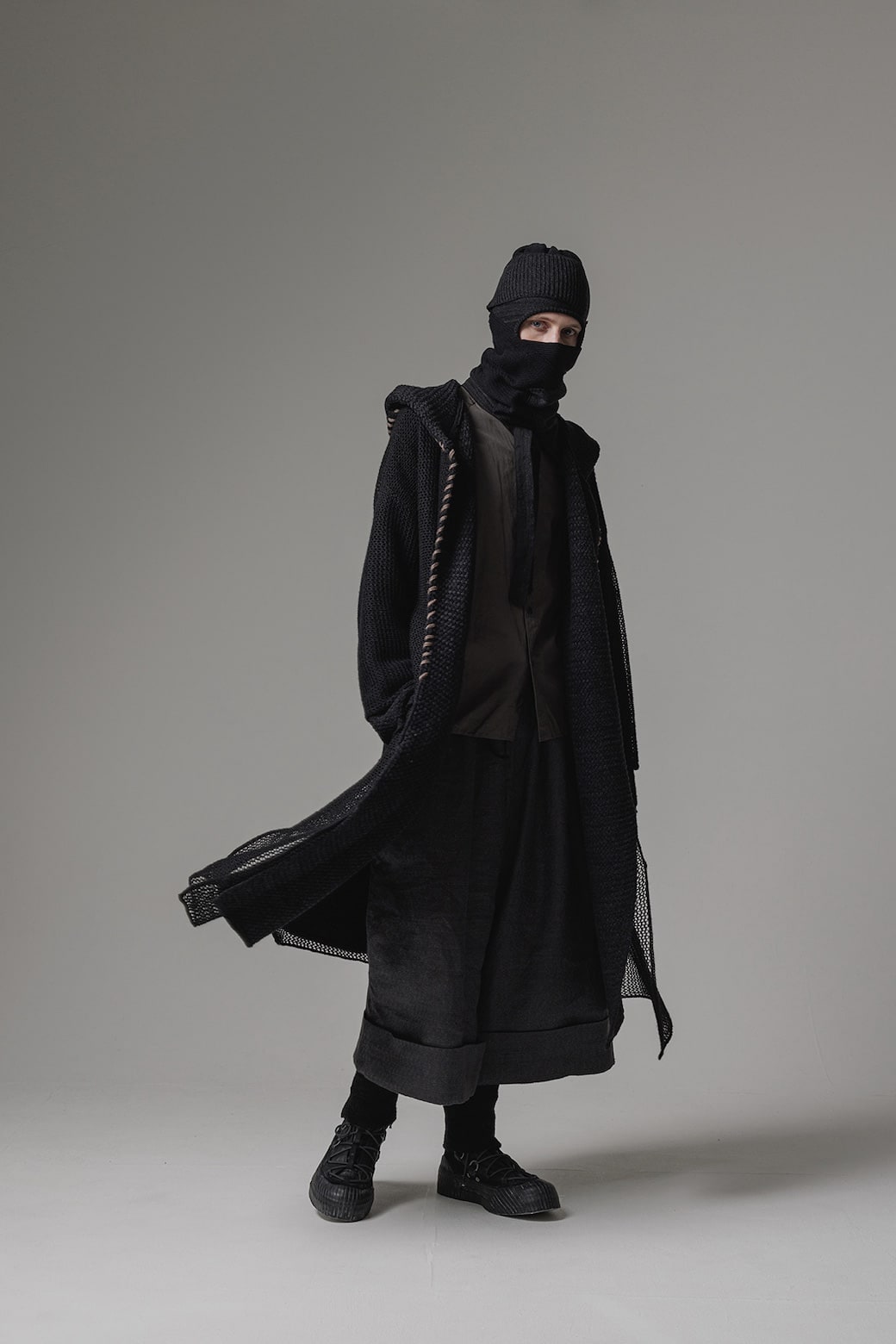
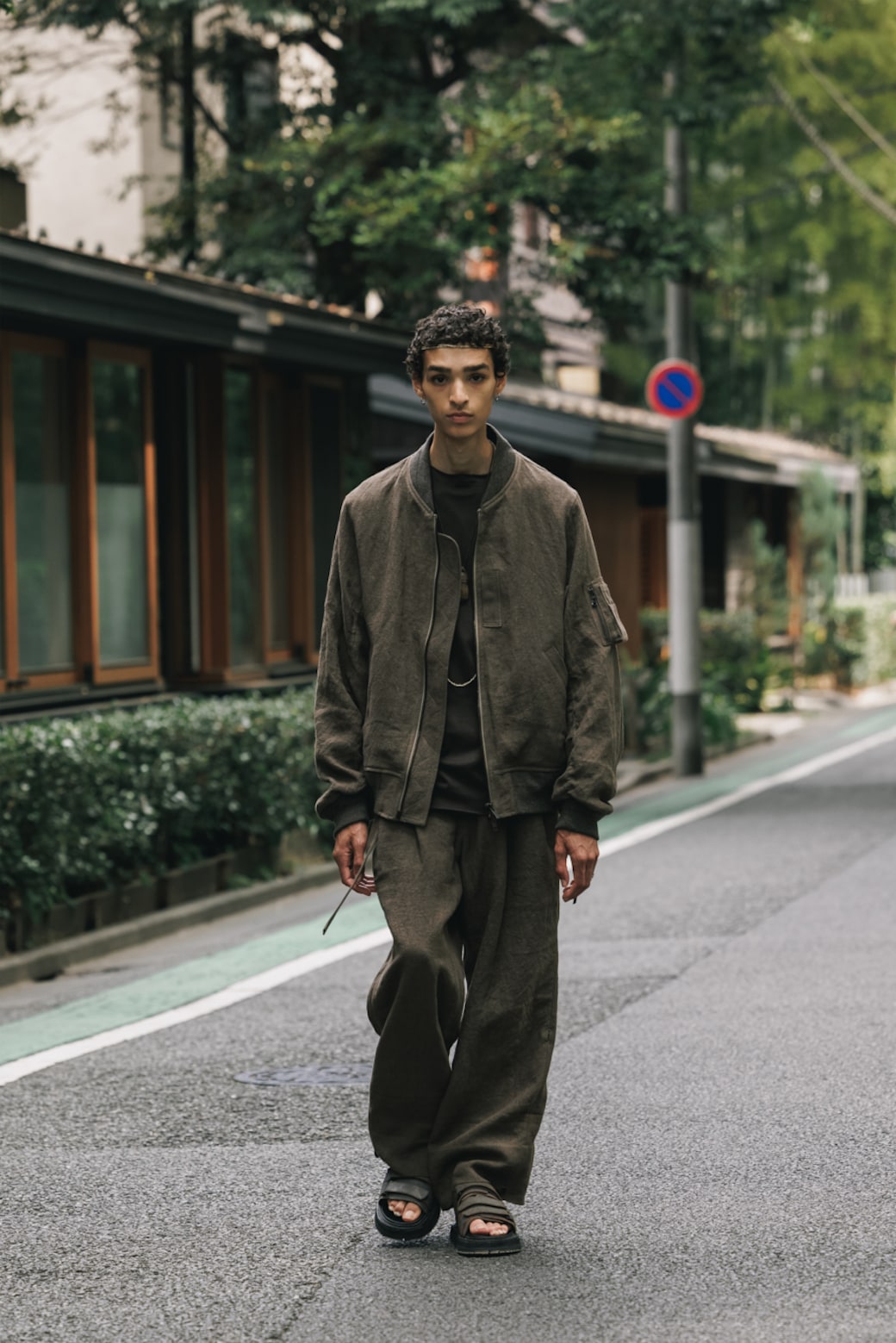
The "Awe-Inspiring" Creative Side of Each Other
How do you see each other as creators?
Okaniwa: Nishida-kun is a total "fabric lover," a fabric fetishist. He genuinely loves them, so he knows an incredible amount about them.
He always looks like he's having fun when he's thinking about fabrics, and he'll talk about them forever (laughs). But that's what's truly amazing about him.
I get a good feeling from the atmosphere of a fabric, but he thinks, "I need to do this to create it from scratch." It's like a chef blending spices to create a fabric.
Nishida: I think Okaniwa-san's attention to detail is truly incredible. He notices the small things customers would notice, of course, but also the things they wouldn't, like the construction and patterning.
He seems to be joking around, but he's actually someone who observes things deeply, thinks, and has great insights. Working with him is a fantastic learning experience for me.
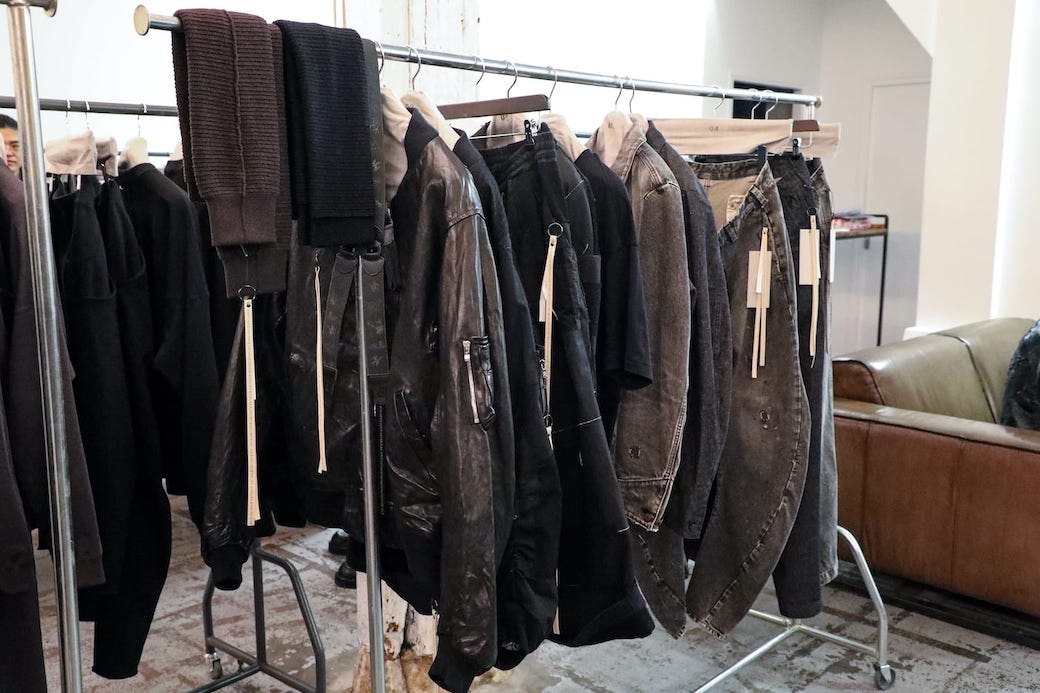
A Creative Process Like a Band Session
This trust seems to have led to a unique creative style.
Nishida: It's exactly like a "band session." In most collaborations, one brand usually serves as the base, but we each have our own parts and create together in a session.
It's interesting for me to see a fabric I proposed turn into an item I never imagined through Okaniwa-san's design. It makes me think, "Oh, so this is what it's used for."
Okaniwa: Even if we like different things, our overall direction isn't that far apart. So, instead of clashing, we somehow find a "sweet spot" while talking. That feeling is very comfortable.
The Freedom of "One-Third the Responsibility"
Does the creative process feel different from how you work on your own brands?
Okaniwa: It's completely different. With my own brand, I'm alone, so there's always a sense of tension. If things don't go well, it's all my responsibility, and I sometimes regret my decisions later.
But with "ISŌ: Phase," I get three times the ideas with only one-third of the responsibility (laughs). This environment actually makes me feel like I have to make THE VIRIDI-ANNE "more like itself," strengthening my resolve for my own brand.
Nishida: For me, it's the opposite; I completely separate it from DEVOA. With DEVOA, I delve deep into my own philosophy, but with ISŌ, I'm freed from that pressure and can purely enjoy new discoveries. That's the feeling.
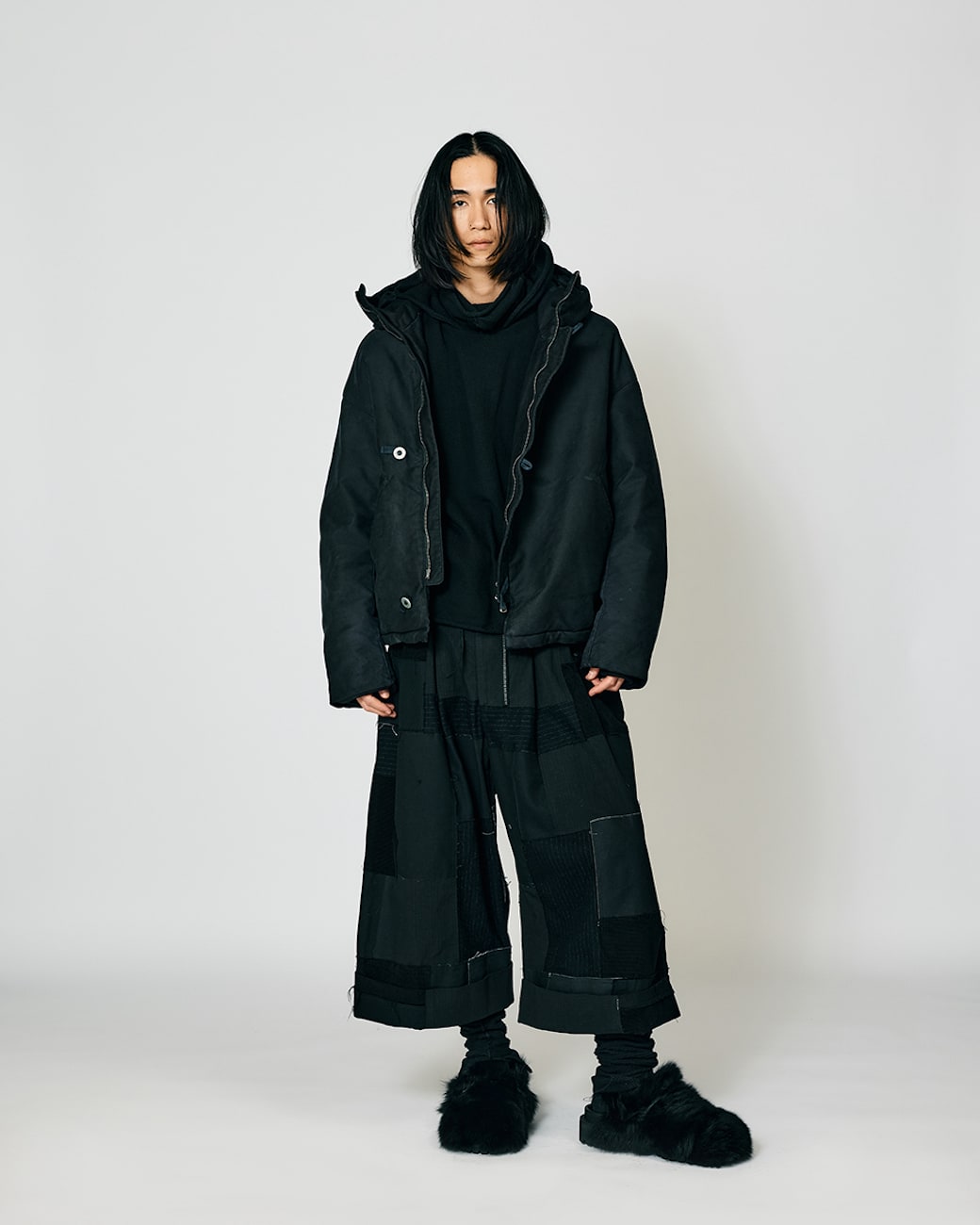
In this free creative process, what moment do you find the most "fun"?
Nishida: It's very simple, but it's when the samples arrive. With DEVOA, I can somewhat predict what the finished product will be like, but with "ISŌ: Phase," it's truly unpredictable.
A fabric I provided comes back as something completely different. That's the most enjoyable moment.
Okaniwa: It's exactly the same for me. The "whoa!" moment when the samples come in might be even bigger than with my own brand. It's full of discoveries like, "Huh, so this is what happens when you do this with this fabric. I like it!"
The Amazing Behind-the-Scenes Stories of the 25FW Collection
Heavy Pique: From Uncertainty to a Masterpiece
The latest 25FW collection is truly incredible. Could you tell us more about the behind-the-scenes story of some of the most iconic items?
Okaniwa: The items using the heavy pique fabric are probably the most symbolic. The moment Nishida-kun showed me the fabric, I thought, "This is amazing." It was a complete "fabric victory," or rather, I felt that whatever we made with it would look cool.
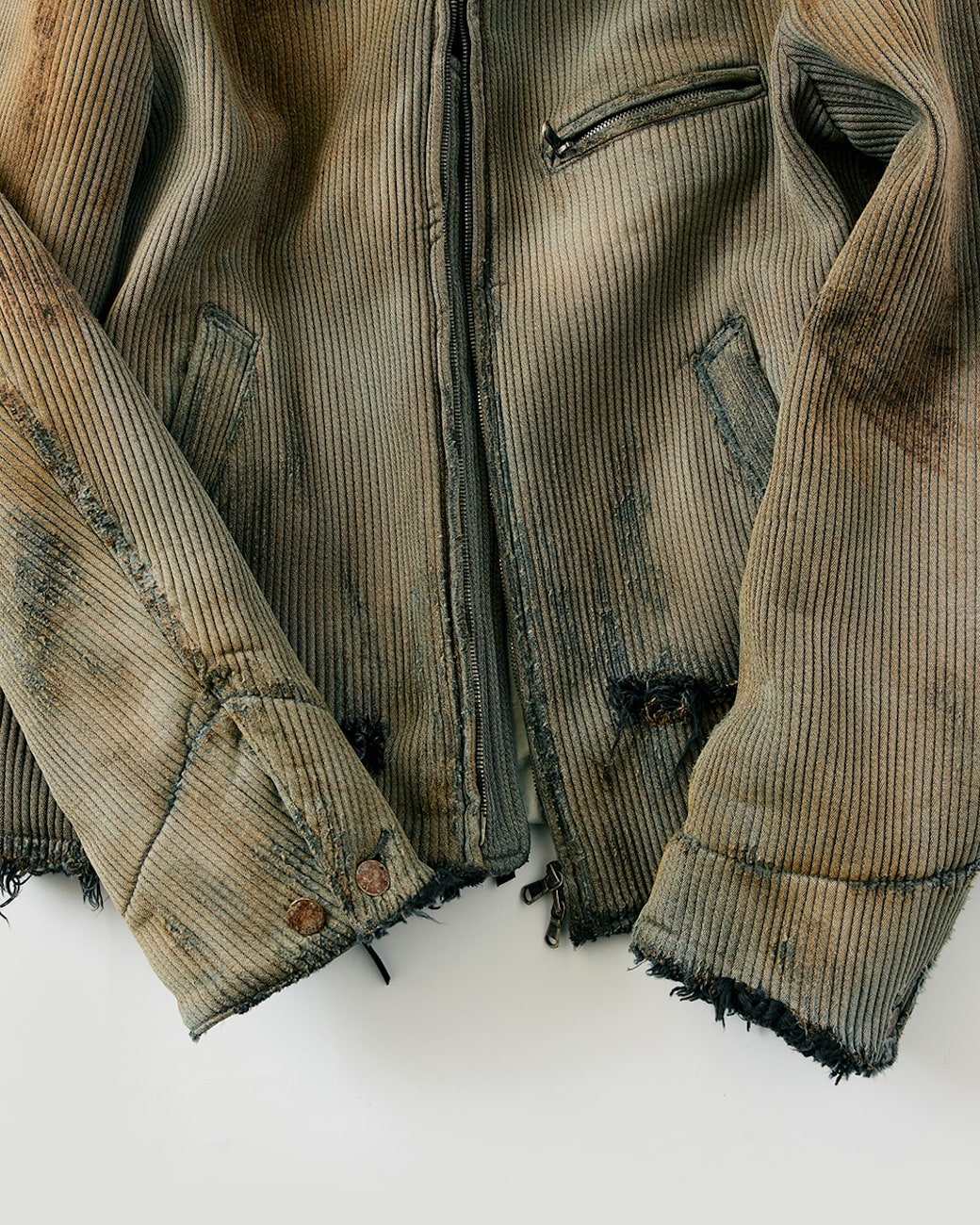
Nishida: The development was incredibly difficult. I analyzed all the vintage fabrics I owned and reproduced the thread from scratch. What makes it special is that even though it uses two colors of thread, before processing, it looks like a flat, dark brown fabric. It's only after a special shrinking process on the fabric stage and then a blast process on the finished product that the underlying color emerges, creating that unique texture. Handing over something that looks so different from the final product to the factory made me constantly anxious, wondering if it would really turn out as intended. I think the people on the production floor probably had a much harder time than I did. Personally, it's something I never want to do again (laughs).
Patchwork: Fabric Creation Beyond Conventional Wisdom
That's... incredible. The patchwork blouson was also stunning.
Nishida: It's a huge pain, isn't it? (laughs). But the balance in the rough sketch Okaniwa-san drew was truly amazing. I was surprised that we were able to reproduce it exactly as it was.
Okaniwa: The fabric selection was also interesting. We each brought a few types of fabric, and we all discussed and picked them, thinking, "With this balance, this color would be good."
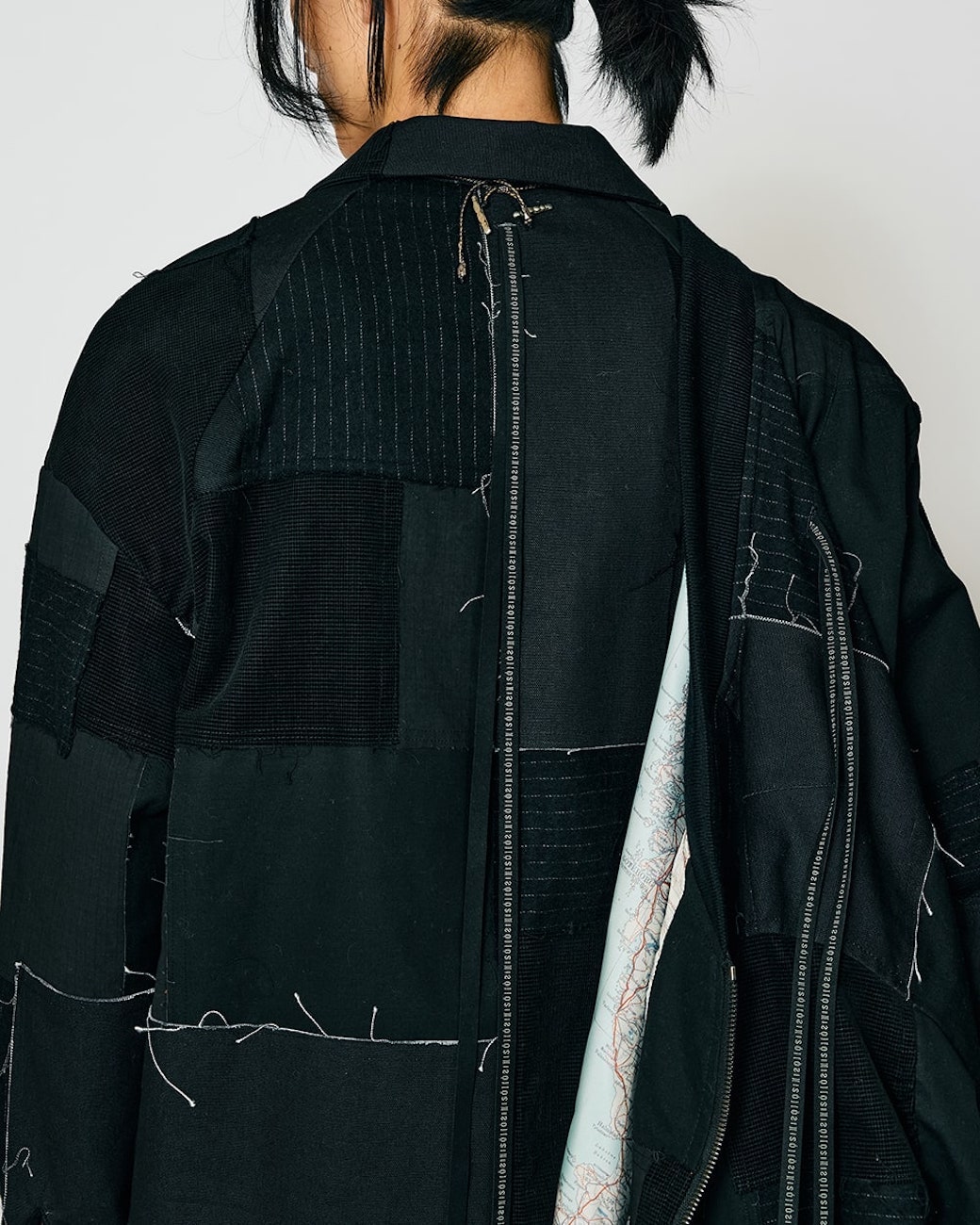
How is it made, exactly?
Okaniwa: You might be surprised, but we don't sew patches onto a base fabric. I handed over a complete diagram detailing the patchwork method and shapes. Then, they cut six or seven different kinds of fabric into the shapes of the parts and hand-sewed them together, piece by piece. We first created several huge patchwork "panels" measuring about 1.8m by 1.2m, and then cut the garment pieces from those panels. What's more, the design of the "panels" themselves is different for the blouson and the pants.
Nishida: From a business perspective, it's extremely inefficient. But there's no doubt that there are things you can't express with any other method.
Okaniwa: I personally love the patchwork, but I also think the leather blouson is amazing.
The Philosophy of Choosing Collaboration Partners
A Dialogue with "The Real Thing"
"ISŌ: Phase" has collaborated with various brands. It feels like there's a special philosophy behind it.
Nishida: With a regular collaboration, one brand's base is often just embellished with something from the other. But from the beginning, we talked about it being a "band," where we each have our parts and can session together. That feeling hasn't changed, and I believe we're creating something that is truly well-blended.
Okaniwa: That's why we only collaborate with "specialists" in their field. We only work with people we can 100% trust and who we know will get it right.
The Chemical Reaction with ANACHRONORM and incarnation
For example, what was the story behind the collaboration with ANACHRONORM?
Okaniwa: I thought, "I wouldn't do this with my own brand (THE VIRIDI-ANNE), but denim would be an interesting element for ISŌ." And I thought, "If we're going to do denim, Tanushi-kun is the best I know." Of course, I'm sure there are many other skilled people, but within my knowledge, he's the one. I've known him since before I started my brand, back when he was a store manager at a select shop in Okayama, and I often wore ANACHRONORM's clothes. Because of that long-standing trust, when I gave him my processing ideas, the first sample came back "70% perfect." I was simply impressed by how skilled he was.
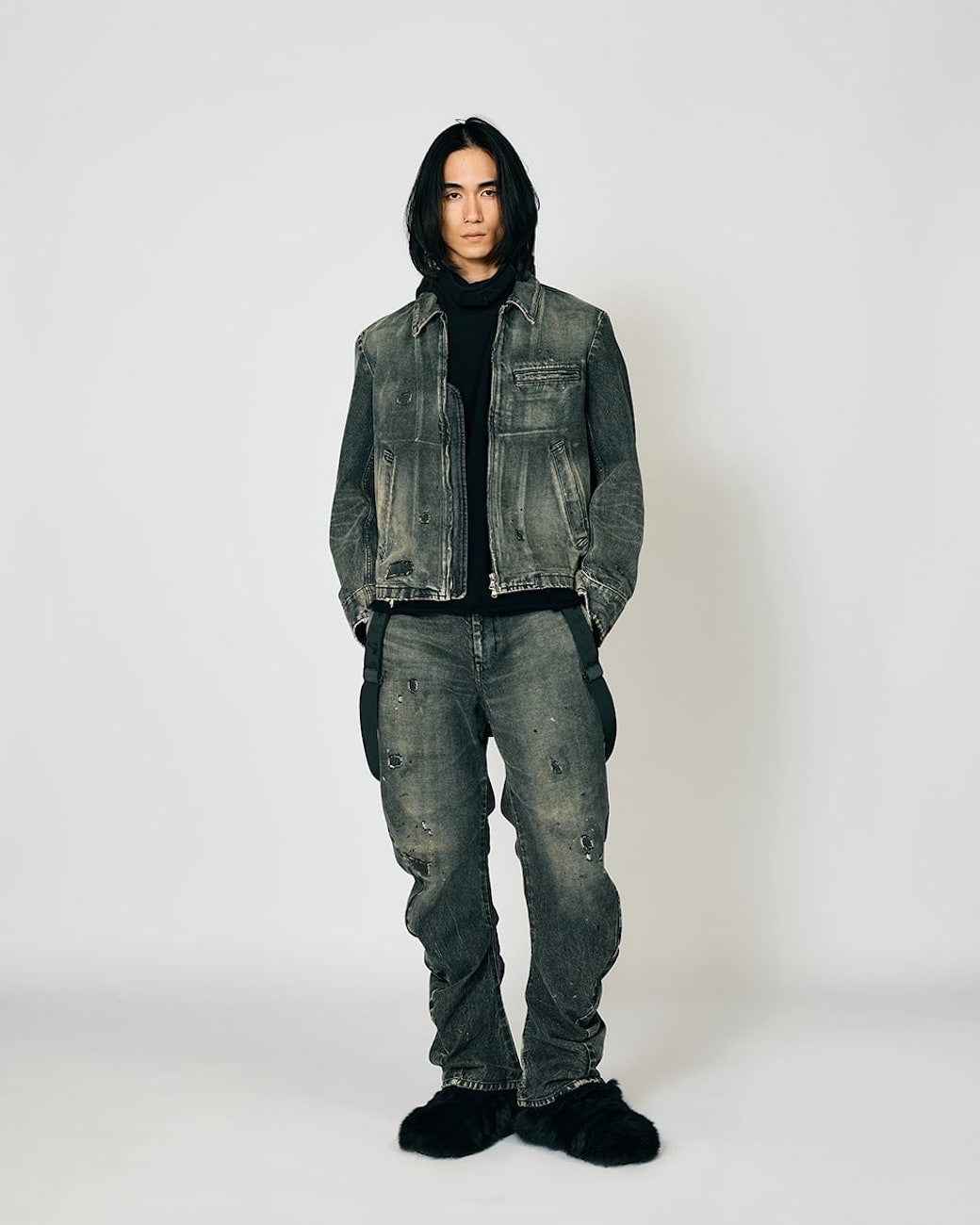
The leatherwear with incarnation was also impressive.
Nishida: We provided the patterns from the ISŌ side and entrusted incarnation with all the sewing and processing. However, what we deliberately proposed was a pattern with a fit that incarnation doesn't usually do. I think it became a unique product for us and a new kind of item for Keita-san (the designer of incarnation) as well. We were, of course, confident in the product, but since it would be a certain price, I was honestly a little worried about how customers would feel when they saw it in the store.
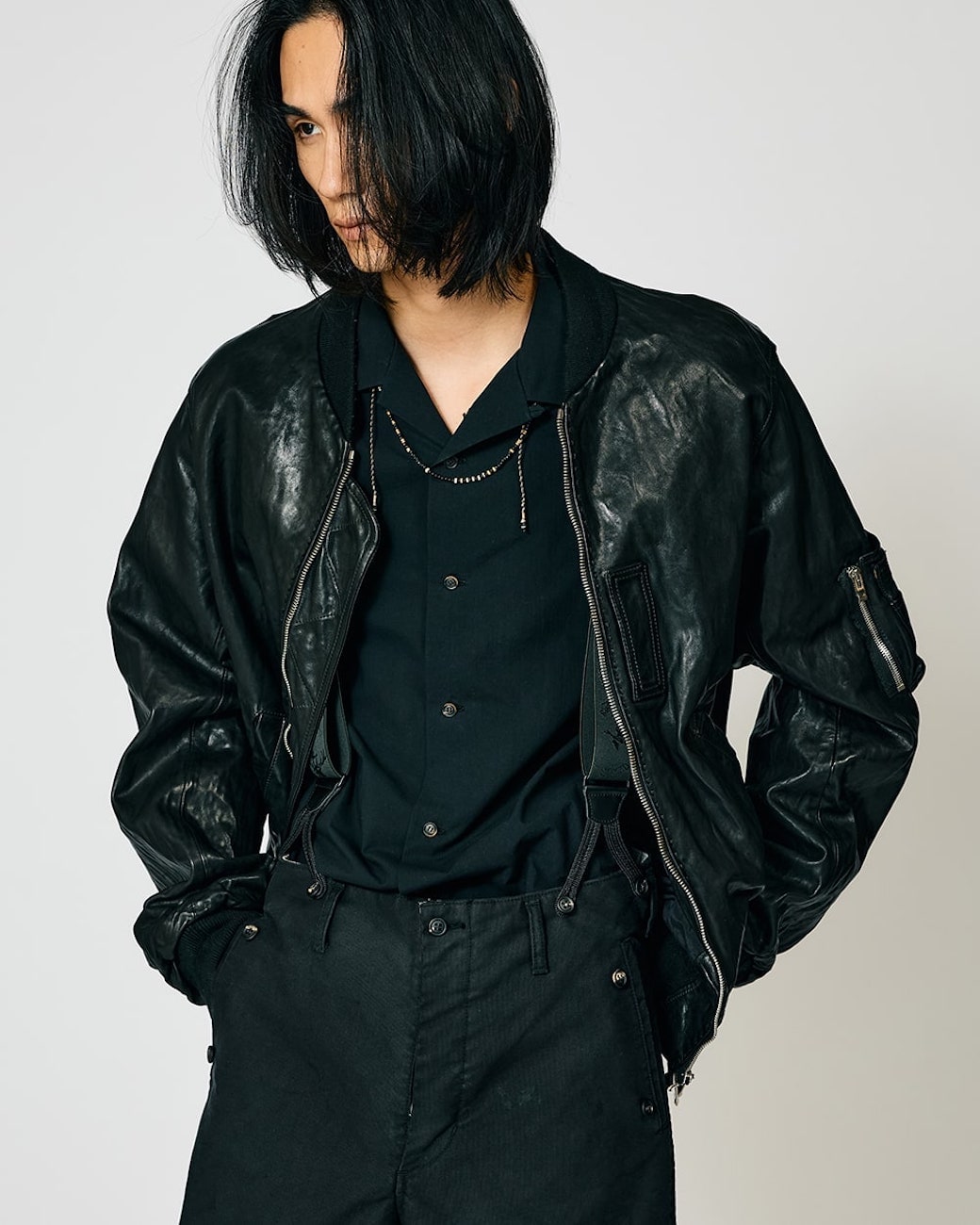
The Resonance with NEKKA and colophon folk
I also heard you've worked with brands outside of clothing.
Okaniwa: For the 25FW distressed knit, we asked a female designer from a brand called "NEKKA." She is a hidden master who learned knitting at "FICCE UOMO," which became famous after being worn by Beat Takeshi, and has been in charge of knits for COMME des GARÇONS and NUMBER (N)INE for many years. Our style is to judge by this kind of fundamental value, not by a brand's name recognition.
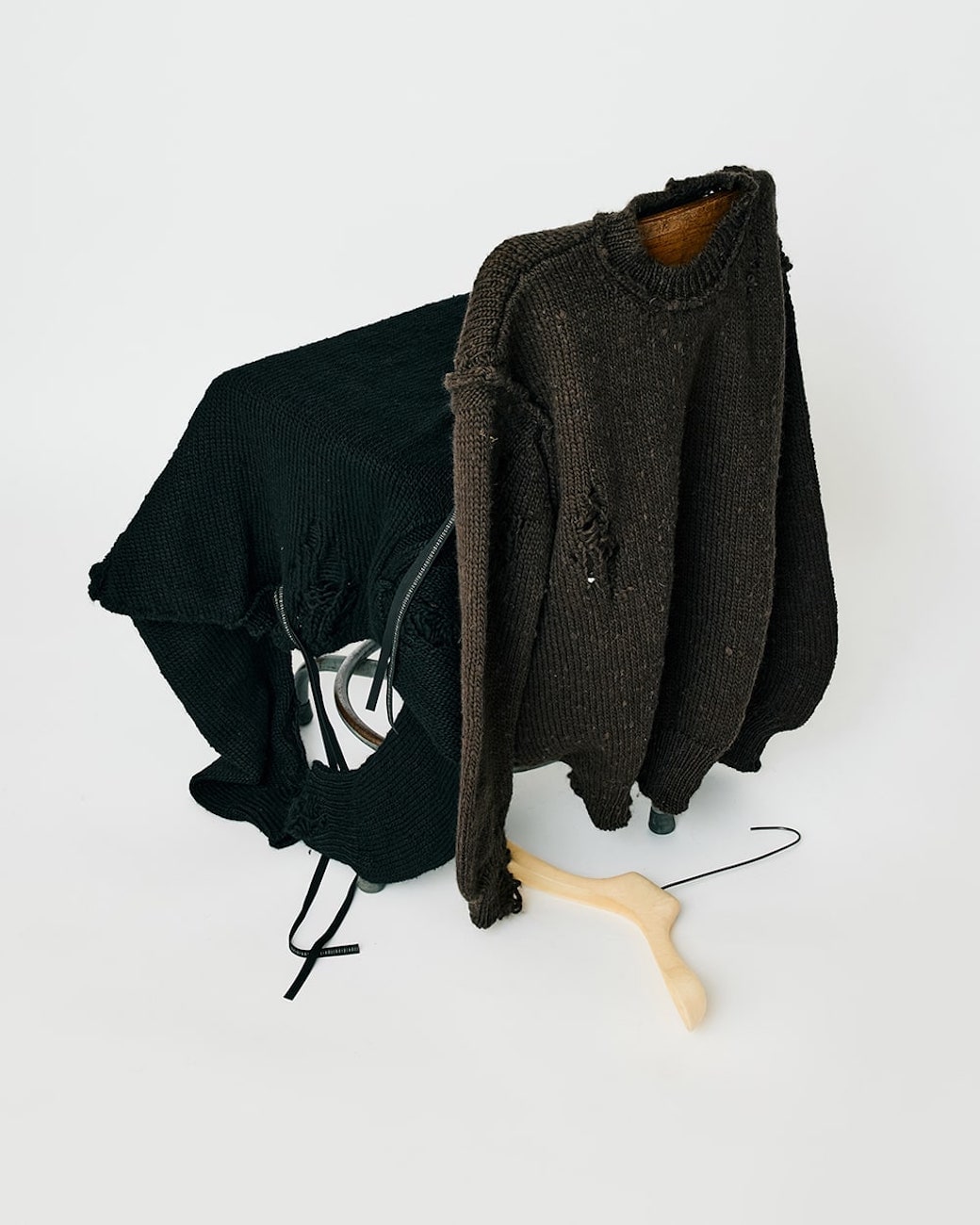
Nishida: For the accessories, we asked a female artist from a brand called "colophon folk." She goes to Africa herself, buys antique parts one by one, and makes accessories. All we told her was the "color direction" for the combinations. After that, she used the materials she collected locally to assemble each piece by hand. I think the collaborations for "ISŌ: Phase" are all dialogues with "the real thing," which we genuinely find interesting.
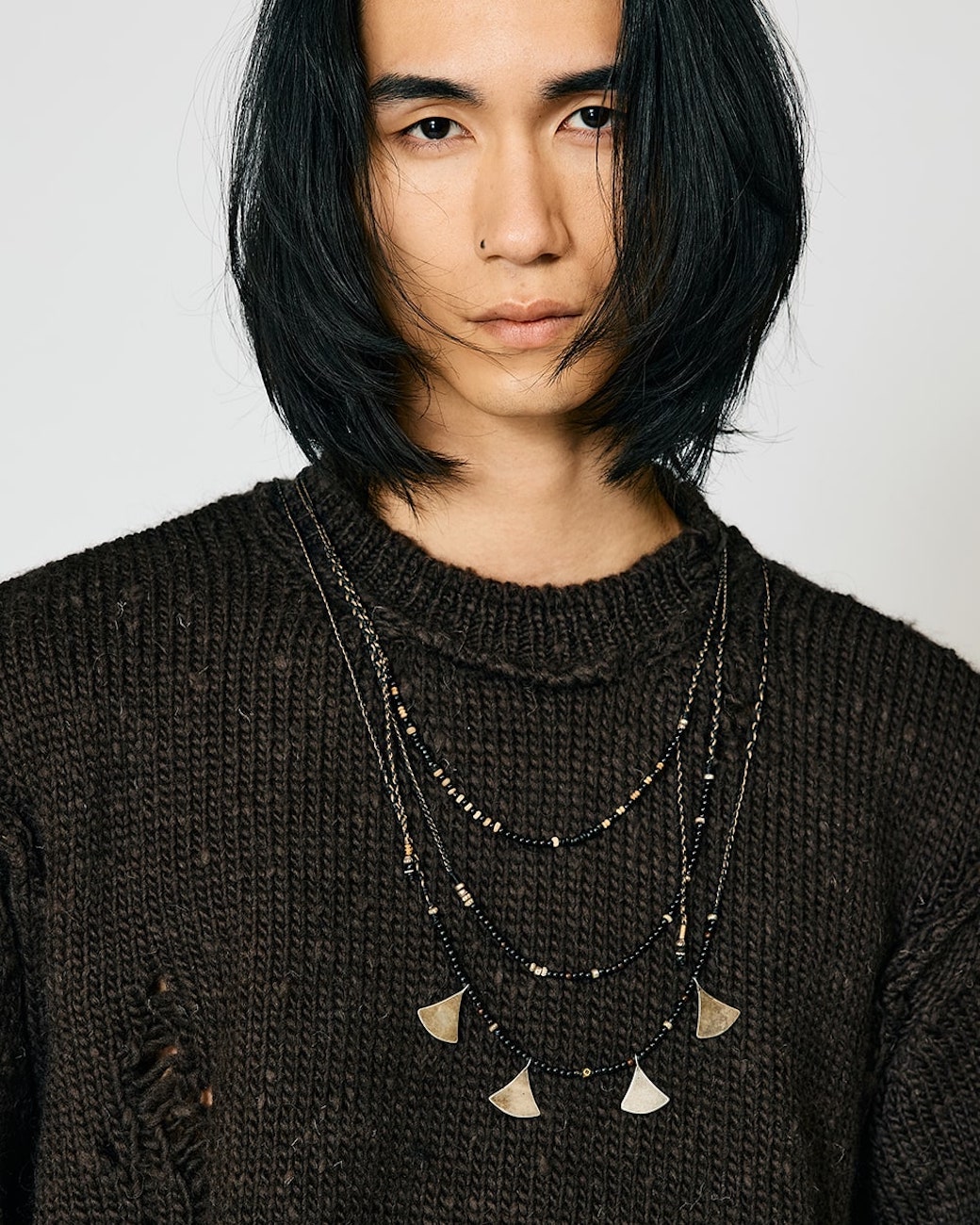
Conclusion: The Future and a Message to Readers
Lastly, could you give a message to the people who will be reading this article?
Nishida: It's quite rare for designers who each have their own brand to continuously work on a single brand, not just for a one-off project. I'd be happy if customers could feel the fun atmosphere and the relationship behind it when they pick up the products. It brings us the greatest joy when customers cherish the items as their own and continue to wear them, enjoying how they change over time.
Okaniwa: I think "ISŌ: Phase" is a brand whose future is unpredictable, as it changes with each season. While the individual items aren't bizarre, there should always be new discoveries in the combination of materials and designs. There are no fixed ways to wear them, so I hope our customers enjoy them freely in their own style.
Thank you for your valuable time today.
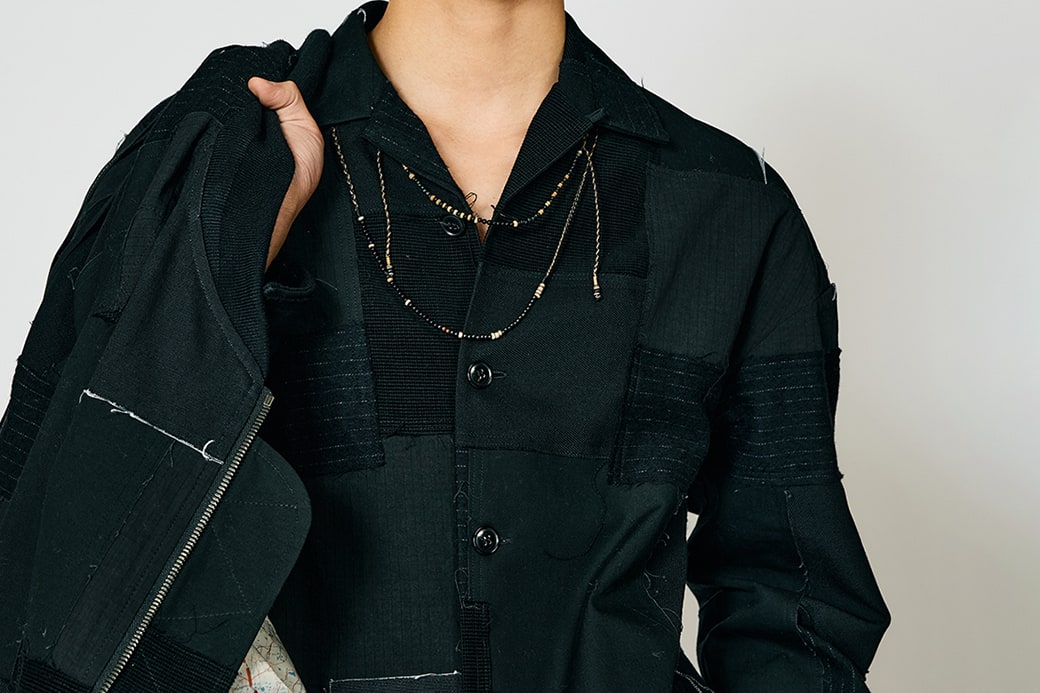
Interviewer, Editor: Toru Morisaki (FASCINATE)